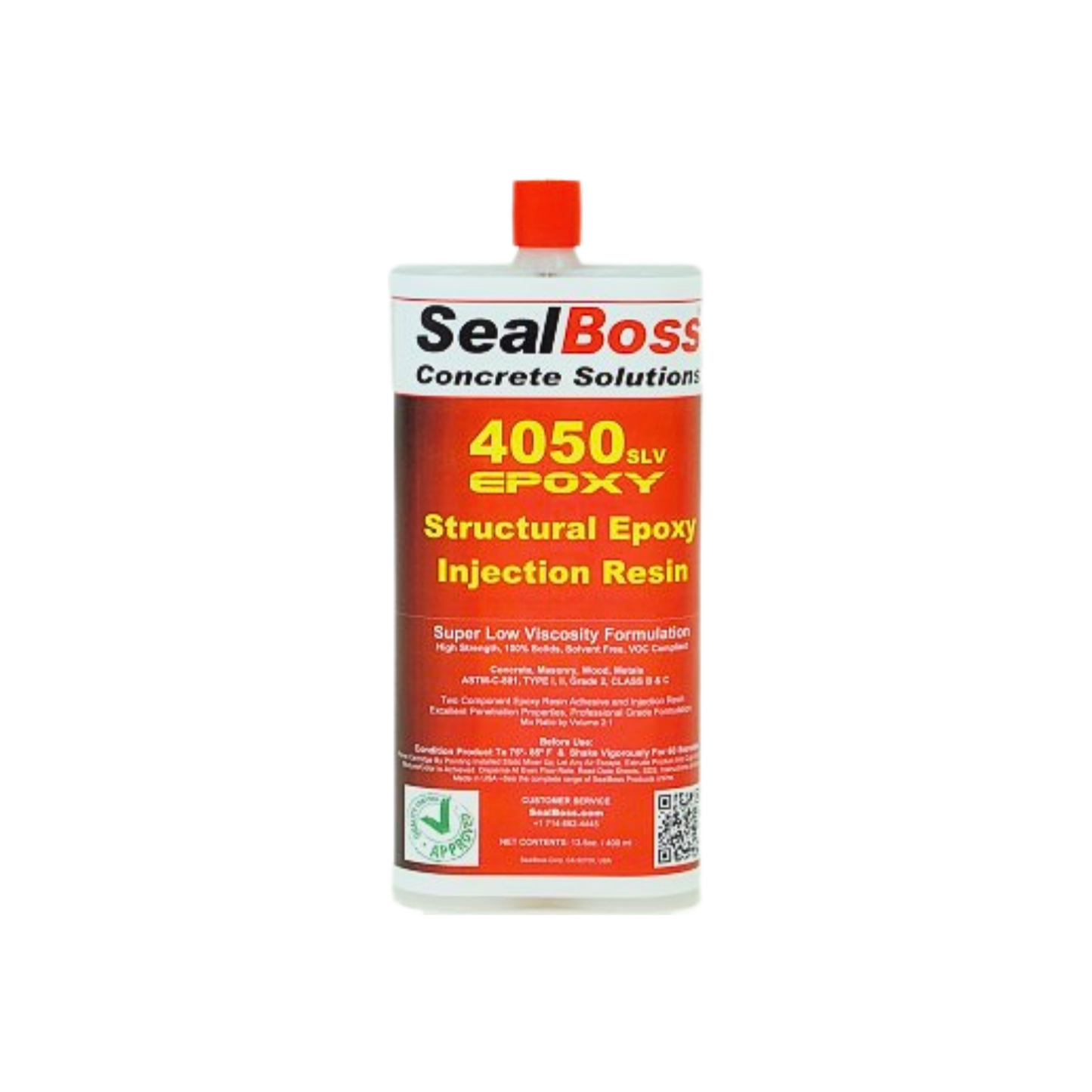SealBoss
SealBoss 4050 SLV Hi-Mod SLV Epoxy Resin
SealBoss 4050 SLV Hi-Mod SLV Epoxy Resin
4050 SLV Epoxy Injection Resin
4050 SLV Epoxy Injection Resin is a super low-viscosity, 100% solids, high-modulus, two-component, moisture-tolerant epoxy adhesive designed for structural crack injection and deep penetration repairs in concrete, masonry, stone, and wood. This high-strength, solvent-free resin cures to a resilient polymer for effective load transfer and bonding.
Complies with ASTM C-881 / AASHTO M-235:
Types I, IV | Class C | Grade 1
For professional use only.
Applications
-
Structural concrete crack injection
-
Welding cracked concrete segments
-
Delaminated slab repair
-
Injection into natural rock, masonry, or wood
-
Gravity feed or pressure injection
-
Sealing of interior slabs and exterior above-grade slabs
Advantages
-
Super low viscosity for deep penetration
-
Strong mechanical bonding under pressure
-
Convenient 2:1 mix ratio (A:B by volume)
-
Solvent-free, VOC-free formula
-
Compatible with standard dual-component injection equipment
Installation Guidelines
Mixing Instructions
Mix components A and B at a 2:1 volume ratio for a minimum of 3 minutes using low-speed mixing equipment to minimize air entrapment. Do not thin or modify.
Crack Injection
Designed for pressure injection into cracks, voids, and delaminations in concrete and similar substrates. Performs in both dry and damp conditions; dry environments yield optimal results. For injection, only use approved two-component equipment. Do not inject into cracks under active hydrostatic pressure.
Injection Port Setup
Clean and expose sound concrete adjacent to cracks. Space injection ports 4" to 12" (10–30 cm) apart based on crack width and structure thickness. Surface cracks should be sealed prior to injection.
Surface Preparation
-
Concrete: Must be clean, sound, and free of dust, oil, and contaminants. Use mechanical methods like sandblasting for proper surface texture.
-
Steel: Sandblast to a clean, bare-metal finish.
Additional Notes
-
Minimum substrate and ambient temperature: 37°F (3.8°C)
-
Material acts as a vapor barrier once cured
-
Do not inject cracks wider than 1/4" (6 mm) without professional consultation
-
Do not add solvents or alter the formulation
-
Color may vary slightly with lighting or UV exposure
Chemical Resistance
Offers strong resistance to a wide range of chemicals, including acids, bases, fuels, oils, and various industrial fluids. Resistance may vary based on concentration, exposure duration, and temperature. Limited resistance to hydrocarbon solvents.


